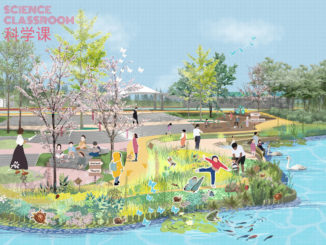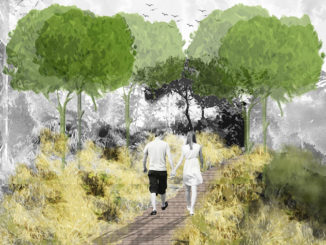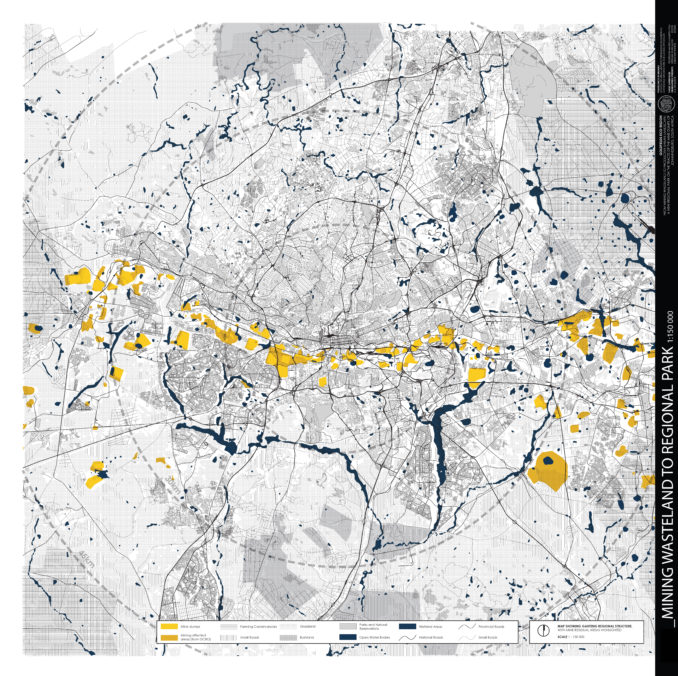
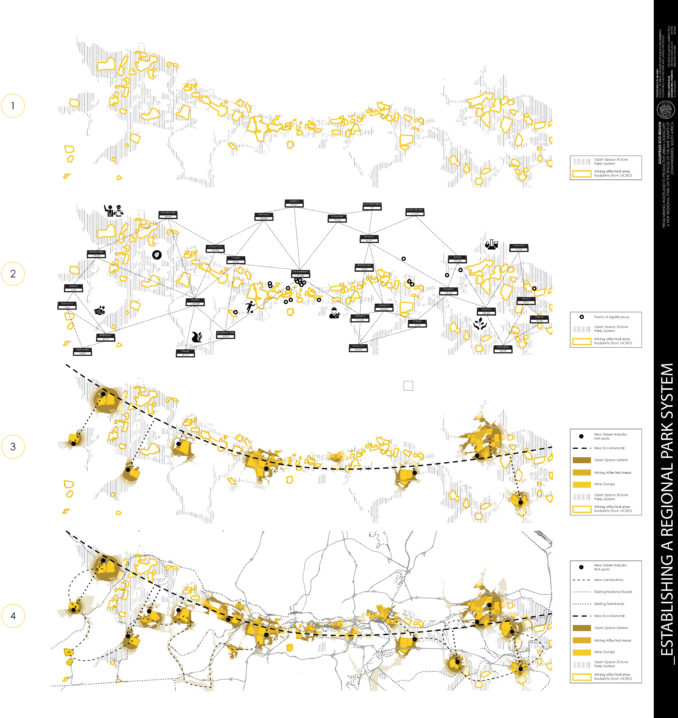
The discovery of gold on the Witwatersrand in 1886 lead to the birth of the Johannesburg Metropolis. In the years since, over 40% of all gold ever mined worldwide has come from the Johannesburg gold mines. The industry, now in decline, has left in its wake a vast sequence of empty and abandoned areas, monumental mine dumps created by the great industrial processes of the past, and of course the sprawling metropolis that survives it. A new industry has arisen as the flow of gold from the mines decreases – ‘reprocessing’ of the mine dumps, so far-seeing 90 tons of residual gold recovered, 222 hectares of land cleared, and 203 million tons of waste removed and transported further afield. These numbers account for only a small portion of the remaining waste. And so the iconic mine dumps are disappearing as quickly as they arose, leaving behind 40 000 hectares of toxic landscapes posing a major threat to the surrounding urban and natural systems. These footprints, however, also hold opportunities for the re-imagining of the city, the re-structuring of spaces and the reclamation of land. Already industrial complexes and housing developments have begun to slowly fill in the wastelands.
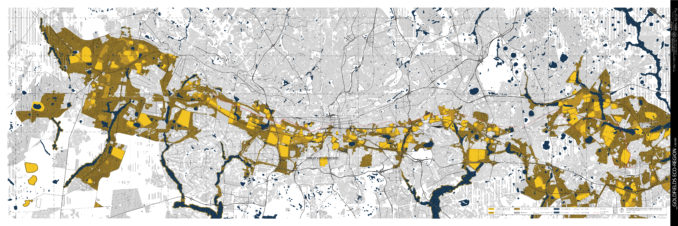
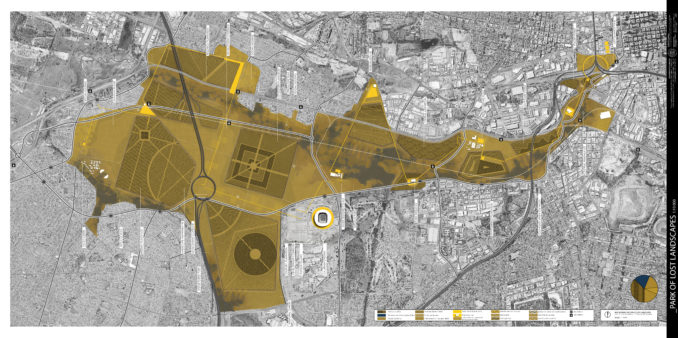
This project began with a desire to remediate these ‘lost’ landscapes left behind by the industry that birthed the city. The subsequent research and mapping process lead to the discovery of the remarkable sequence of potential open space that spanned the entirety of the urban region from East to West, passing through the very heart of the city. Where most cities have a river, shoreline, or mountain range that guide their initial formation and subsequent development, Johannesburg was built along the gold reef found beneath its surface, which has resulted in a sprawling, fractured urban realm today. This project explores the idea of maintaining this landscape sequence left by the mining industry and, instead of simply allowing it to be engulfed by the city, putting it to a new use as open green space. Remediation by the action of certain plants is a well-known strategy, but in this case the process is amplified to an industrial scale so that it may drive a new Green Industry. The resulting system of parks, natural reserves, landscape projects and architectural interventions becomes a new connective medium for the city, an act of “Landscape Urbanism”, becoming the ‘backbone’ of natural structure that the city lacks. The footprints of the mine dumps, once symbols of waste and degradation, become natural reservoirs and anchors within a new ‘eco-region’. The goal was not only the remediation and treatment of the damaged eco-systems, nor simply the stitching of previously isolated parts to the whole; the goal was to give Johannesburg a new cultural significance, a new purpose and economical driver. The City of Gold becomes the City of Green.
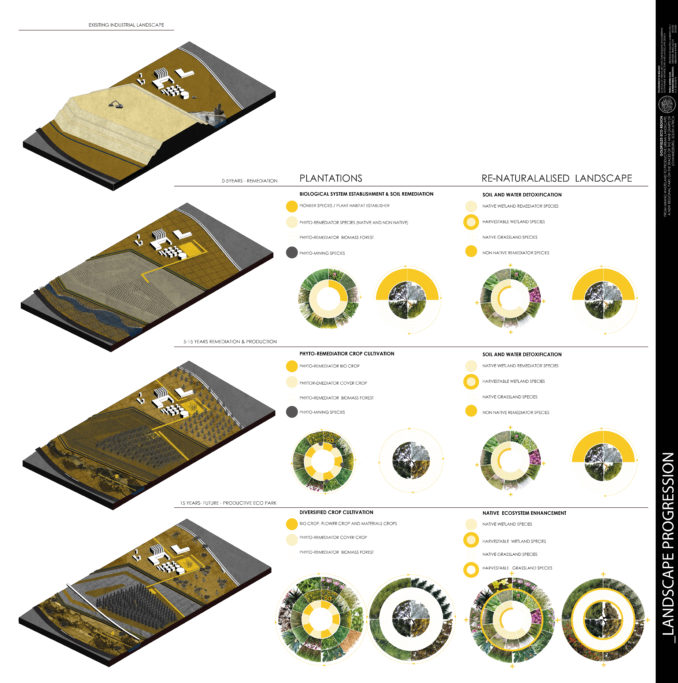

The immense scale of the project forced a multidisciplinary approach. Research into environmental systems, mining waste management, ecological systems, emerging horticultural trends, and the nature and feasibility of the green industry was vital to inform the creative process, and as a result, the project took on the form of a landscape and urban design framework which focused largely on the transformation process. Conceptual maps, visions, collages and diagrams, evocative wording, symbolism and textures were all utilised to drive an overarching idea of how one could begin to visualise the future of this landscape, its role in the city, and inform the future architectural, landscape and urban design projects to come.
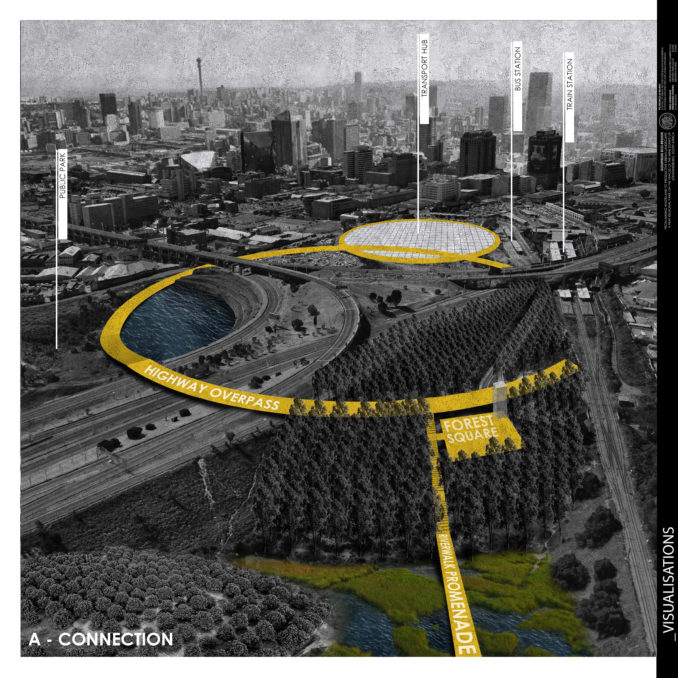
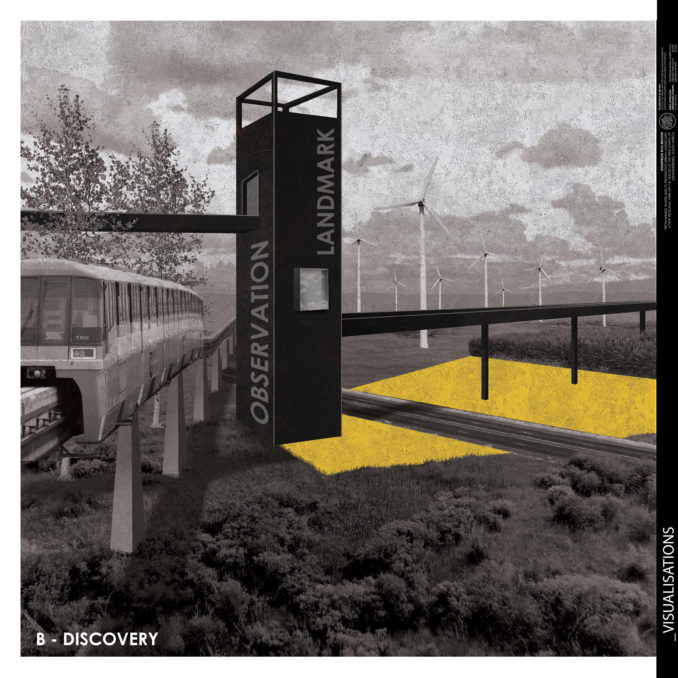
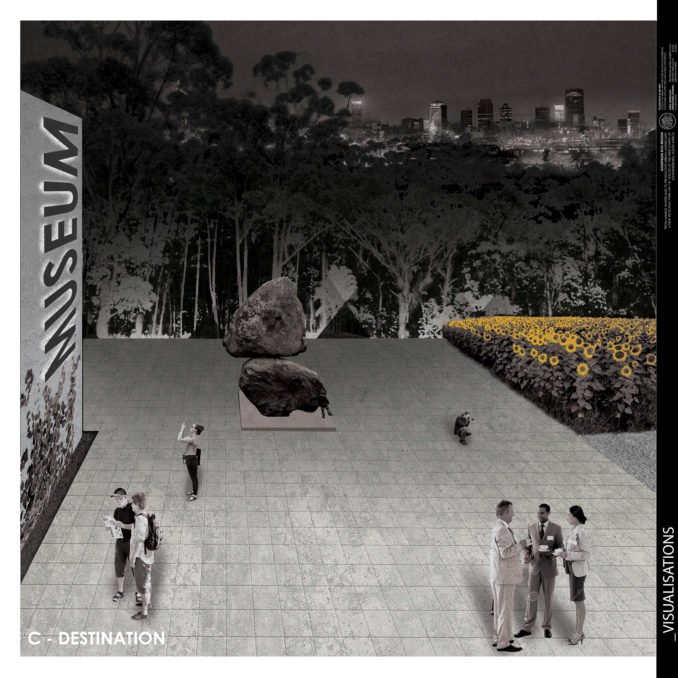
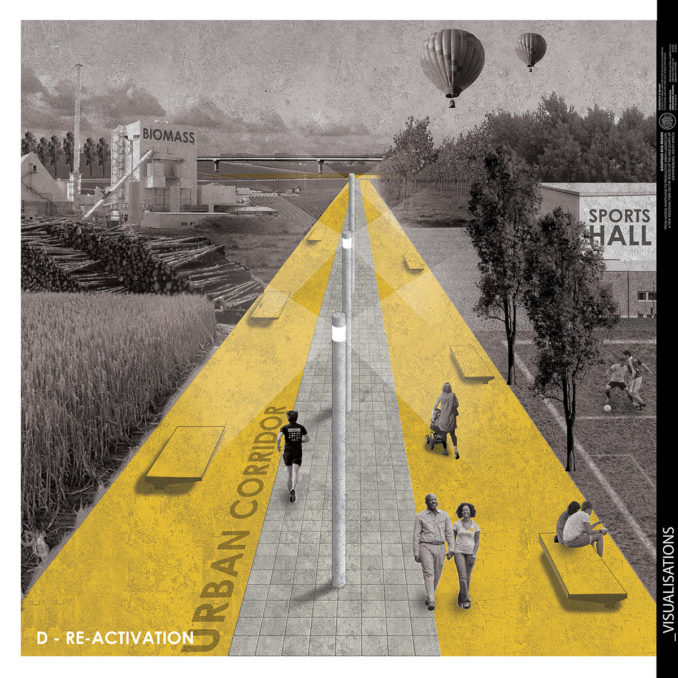
Goldfields Eco-region: a New Regional Park on the Traces of the Mine Dumps of Johannesburg, South Africa
Project Location: Johannesburg, South Africa Year: 2018
Authors: Stefania Siniscalchi and Sebastian Waters
Image and text credits: Stefania Siniscalchi and Sebastian Waters
The project conducted with guidance from Professor Matteo Poli, as part of the requirements for a Masters degree in Sustainable Architecture and Landscape Design from the Politecnico di Milano in Milan, Italy.


